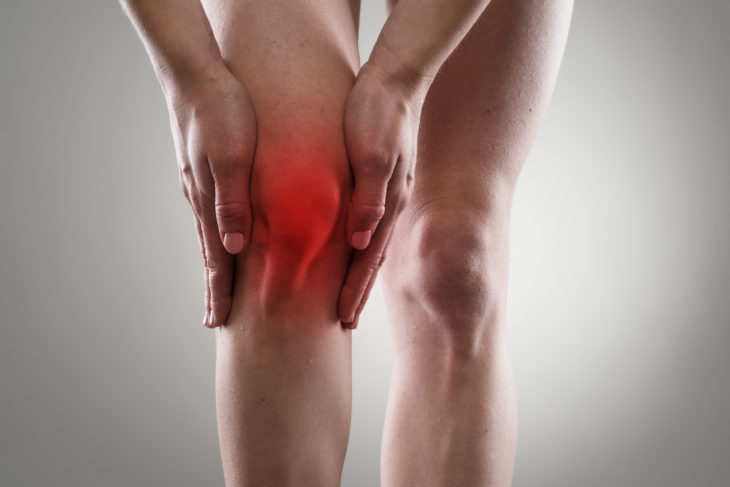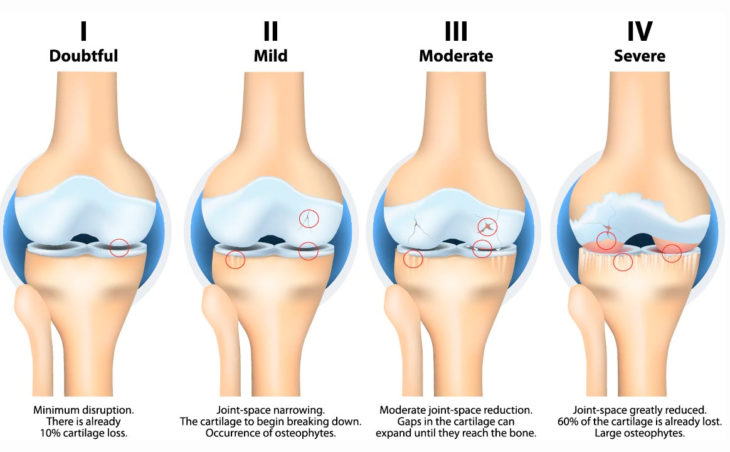The knee is one of the largest joints in our body. It carries the whole body’s weight and helps us to stand, to run, to walk. This joint is made up of three bones i.e. femur, tibia and patella. These are attached with a capsule of joint, and different ligaments in and around the joint. At the end of each bone, there is cartilage which helps in preventing friction between two bones. Prevention is possible with using Dona products for joint health. There is also a jelly-like liquid inside the joint called synovial fluid.
Osteoarthritis (OA) of the knee is characterized by pain and limitation of joint movements. It considerably affects the quality of life. Degeneration, decay, and injury of articular cartilage is the hallmark of the pathologic process of osteoarthritis of the knee. There is also subchondral sclerosis, enlarged joint margin, and decay of subchondral bones. Reduction of joint space as seen in x-ray because of the reduction of cartilage height and growth of small pieces of bone-in and around are commonest observations. There will be crackling sounds on the movement of joint. Causes of pain in osteoarthritis of the knee are several, however, inflammation and sensitization of nerve ending are the most important of all mechanisms.

Source: naturalhealthcarecenter
Osteoarthritis of the knee affects male and females equally. It is the foremost joint disease in the USA and the prevalence of symptomatic osteoarthritis of the knee is high in the aged population. It is seen very commonly in men and women when they are of sixty years of age. It is very common in Indian and Asian population too. The overall prevalence of degenerative arthritis of the knee in Asian countries is twenty-eight percent. It’s more common in females significantly when they are above forty-five years of age with a prevalence of thirty-one percent. However, it’s more common in males below forty-five years of age. Additional risk factors are overweight, age and an inactive lifestyle.
The predominant symptom of degenerative arthritis is pain that brings a patient to a doctor. However, the severity of degenerative arthritis and pain might not match. According to daradia.com there are several factors that determine the severity of symptoms and plenty of them are still unknown. Factors which can be related to additional pain are depression of patient, chronicity or period of degenerative arthritis, obesity, traumatic joint injury and presence of additional joint pain in other joints and inflammatory arthropathy like rheumatoid arthritis. There are various studies that tell that x-ray grading and symptom severity don’t match in osteoarthritis. Assessment of pain with severity, characteristics, aggravating & relieving factors are needed to know the pathophysiology of pain in degenerative arthritis of the knee.

Source: ultracarepro
The goal of management of OA knee is the reduction of pain and restoring the performance. In early stages, it’s managed by analgesics like paracetamol and Ibuprofen in conjunction with co-analgesics like duloxetine. Exercise and other nonpharmacological therapies are necessary for the management program. Injection of intraarticular Hyaluronic Acid and in hand-picked cases injection of corticosteroids have also a role in the management of early OA knee. In advanced OA of the knee, if symptoms are not relieved, total knee replacement surgery is indicated. However, in recent days, injection of platelet-rich plasma in knee bringing good hope in these patients.
In short, Osteoarthritis of the knee is an age-related degeneration of knee, seen very commonly in the elderly population. Weight reduction, modification of sedentary lifestyle and exercises are most important apart from simple analgesics like paracetamol.
